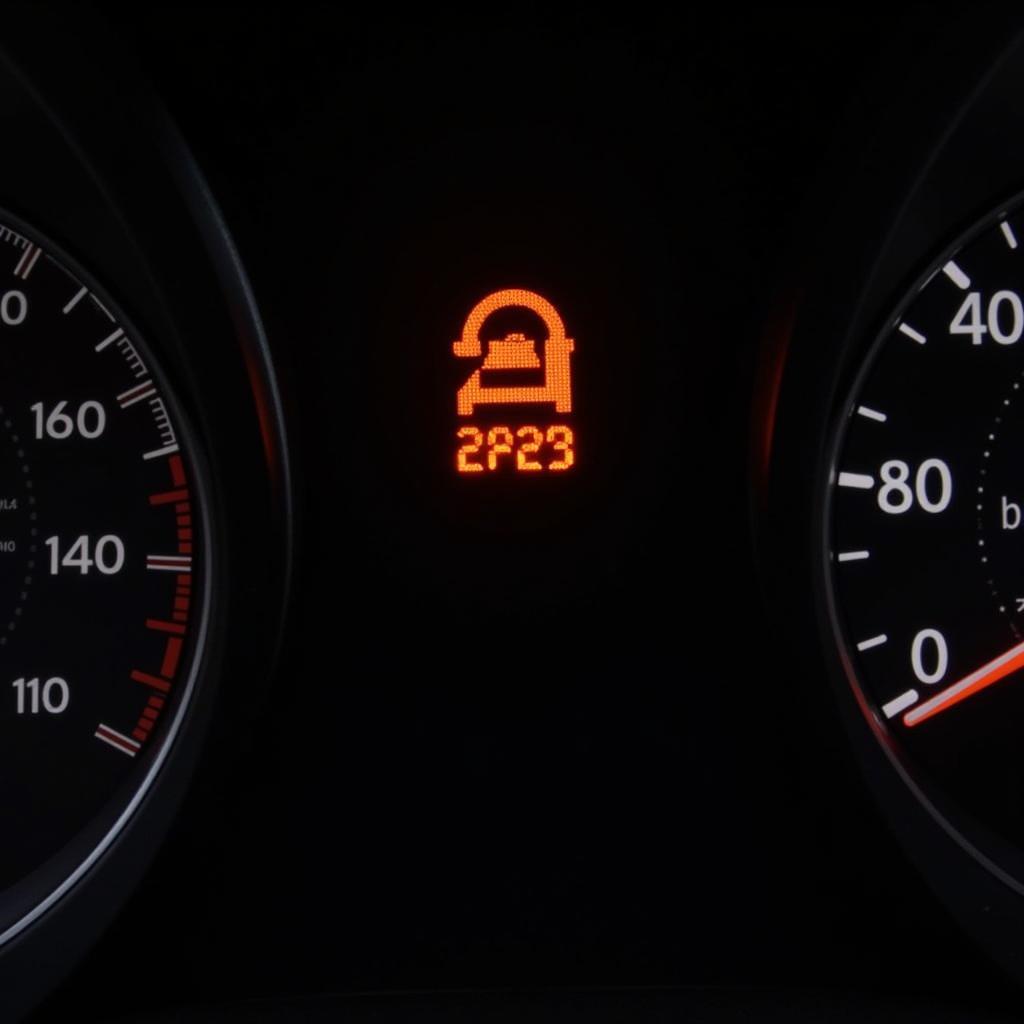Seeing your brake warning light illuminate on your dashboard can be a nerve-wracking experience. While it’s normal for the light to flash momentarily when you start your car, a brake warning light that stays on signals a potential issue with your braking system that shouldn’t be ignored. As an expert in automotive electrical engineering specializing in remote diagnostics, programming, and software installation, I’m here to shed some light on the common causes of a persistent brake warning light.
Common Culprits Behind a Stubborn Brake Warning Light
Several factors can cause your brake warning light to stay on. Let’s delve into the most frequent culprits:
1. Low Brake Fluid Level
One of the most common reasons your brake warning light stays on is low brake fluid. Brake fluid is the lifeblood of your braking system, transmitting the force from your foot on the brake pedal to the wheels, enabling your car to stop.
Expert Insight: “A leak in your brake lines can lead to a rapid drop in brake fluid, significantly compromising your ability to stop safely,” says automotive engineer, John Miller. “It’s crucial to address this issue immediately.”
 Car with low brake fluid level warning light on
Car with low brake fluid level warning light on
2. Worn Brake Pads
Your brake pads are designed to wear down over time. When they become too thin, a sensor within the brake pad will trigger the warning light, indicating it’s time for a replacement.
Expert Insight: “Driving with worn brake pads not only diminishes your stopping power but can also damage your brake rotors, leading to more costly repairs down the line,” advises automotive specialist, Sarah Chen.
3. Faulty Brake Light Switch
The brake light switch, located near the brake pedal, activates your brake lights when you press the brake pedal. If this switch malfunctions, it can also trigger the brake warning light.
4. ABS Issue
Modern vehicles are equipped with an Anti-lock Braking System (ABS). If the ABS module or a wheel speed sensor experiences a problem, it can illuminate the brake warning light.
 Dashboard warning lights, including the ABS warning light
Dashboard warning lights, including the ABS warning light
What to Do When Your Brake Warning Light Stays On
If your brake warning light stays on, don’t panic. Instead, follow these steps:
- Safety First: Safely pull over to the side of the road and assess the situation.
- Check Your Brake Fluid: If you feel comfortable doing so, carefully check your brake fluid level. If it’s low, adding brake fluid might temporarily solve the problem, but you’ll need to visit a mechanic to diagnose and repair the leak.
- Inspect Your Brake Pads: If possible, visually inspect your brake pads for wear and tear.
- Seek Professional Help: If you’re unsure about the cause or uncomfortable performing any checks, it’s best to contact a qualified mechanic or visit a trusted service center. Driving with a potential brake problem can be dangerous, so it’s crucial to have your car diagnosed and repaired as soon as possible.
Don’t Ignore the Warning
Remember, your car’s brake warning light is a crucial safety feature. Ignoring it could lead to more extensive and costly repairs down the line or, even worse, compromise your safety and that of others on the road.
If you notice your brake warning lights stay on, don’t hesitate to seek professional help. Addressing brake issues promptly is vital for your safety and the longevity of your vehicle.
FAQs about Brake Warning Lights
1. Can I drive with the brake warning light on?
It’s strongly advised against driving with the brake warning light on. This light indicates a potential issue with your braking system, and continuing to drive could be dangerous.
2. How much does it cost to fix a brake warning light?
The cost of repair varies depending on the underlying cause. Simple fixes like a brake fluid top-up or brake light switch replacement can be relatively inexpensive. However, more complex issues like ABS module replacement or brake line repairs can be more costly.
3. How often should I check my brake fluid?
It’s good practice to check your brake fluid level at least once a month or whenever you check your other fluids, such as engine oil and coolant.
4. How long can I drive with my anti lock brakes warning light stays on?
While your car may still brake with the ABS warning light on, the system designed to prevent wheel lockup during hard braking is disabled. It’s best to have this addressed as soon as possible to ensure optimal braking performance.
5. Can a bad sensor cause the brake warning light to come on?
Yes, a faulty ABS wheel speed sensor can trigger the brake warning light. These sensors monitor the speed of each wheel and relay information to the ABS module. If a sensor sends incorrect data, it can cause the ABS system to malfunction, illuminating the warning light.
6. Do I need to replace all my brake pads at the same time?
While it’s recommended to replace brake pads in axle pairs (both front or both rear), it’s not always necessary to replace all four simultaneously. Your mechanic can advise if your brake pads have even wear patterns and which ones require replacement.
7. Is it safe to add brake fluid myself?
If you’re comfortable doing so, you can add brake fluid to your car temporarily. However, it’s crucial to use the correct type of brake fluid specified in your owner’s manual. Adding the wrong type can damage your braking system.
Remember, your car’s braking system is critical for your safety. Don’t hesitate to seek professional help if you encounter any issues or have concerns about your brakes.

